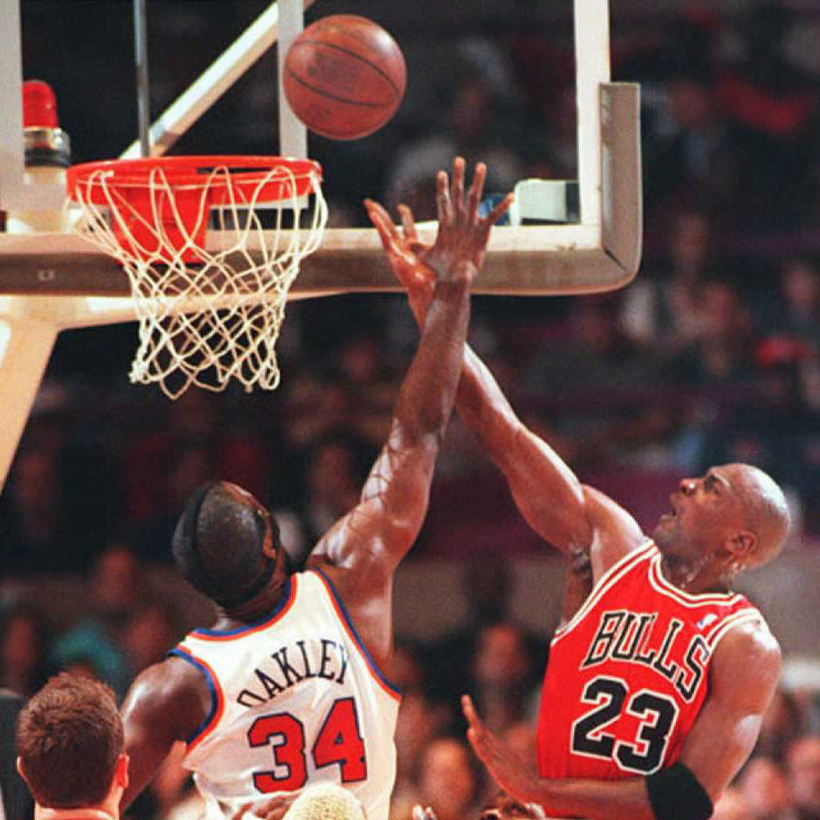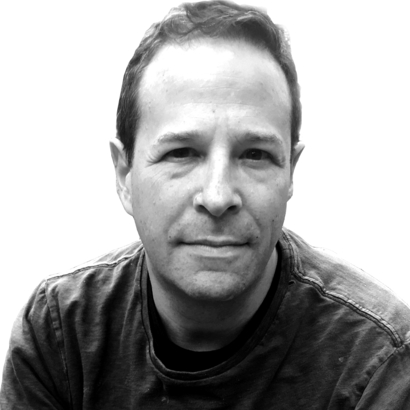About 15 years ago, Charles Oakley and Michael Jordan went, with a handful of friends, to Churchill Downs in Louisville to see the Kentucky Derby. Jordan dressed like a gangster in a beige-and-white candy-striped suit, white shirt, gold tie, white shoes with thick soles. He carried a cigar, sometimes in his mouth, sometimes between the fingers of his right hand. He was talking preliminaries and odds when his crew happened on another crew, this one centered by John Salley and Dr. J and including the actor Chris Tucker and the comedian Dave Chappelle.
The groups met and mingled, admired, confronted. Salley wore a linen suit with a white shirt and a modest tie. He had one cigar in his hand and another tucked, with his sunglasses, in his breast pocket. He towered over everyone, in a Panama hat with a rust-colored band. Chris Tucker wore electric blue—suit, tie, shirt, belt. The toes of his shoes were pointy. Dr. J wore a fedora and a bolo tie. You’d have half expected them to break into song. The PA system announced the names of horses and trainers. Mint juleps went by in the crowd.

Salley, who’d played with and against Michael in the NBA, leaned close to Jordan, smiled, and, in the way of an old warrior sharing a joke at the end of a long day, gave MJ a little friendly ribbing. “At 27 years old,” Salley told Jordan, “Kobe Bryant would’ve given you the business.”
And then, out of nowhere, like a bolt from the Kentucky blue, WHAM!
Oakley, a decade past retirement, gray, gimpy, and old, threw a gym-strength uppercut into Salley’s sternum, knocking the wind out of the seven-footer, doubling him over. Hands on knees, linen suit and all, he struggled to get his breath.
“Oakley’s been wanting to hit me since the 80s,” Salley said on The Dan Le Batard Show with Stugotz podcast. “But man, he hit me with everything he could. I had a suit on, too. And I wasn’t going to stand back up and fight him. I’m a karate man. I bruise on the inside.”
Oakley denied it. Not that he hit Salley at the Kentucky Derby, which he joyfully owns, but that it was because Salley trash-talked Jordan. “I definitely hit him because he said something I didn’t like,” Oakley explained, “but it had nothing to do with Michael and Kobe.”

Whatever it was must’ve been important, but Oakley can’t remember. The point here is that Oakley was falling, as you fall into a familiar routine, back into his first and most satisfying role in the NBA—protecting Michael Jordan from a Detroit Piston.
Bulls GM Jerry Krause never had to state the role explicitly, nor include it in a contract, but it was clear what the GM wanted when he told Oakley that his job was to rebound, create space, and protect the marquee players. For Oakley, this role went from professional to personal early in his first season in Chicago, when he came to see Jordan as something more than a teammate. They were brothers, and remained so even after Oakley was traded to the Knicks.
A basketball team is a family, a collective, a series of alliances, relationships, rivalries, and triangles. Horace Grant loved Scottie Pippen, who loved Michael Jordan, who also loved Michael Jordan. If you look closely, you’ll discover a father figure on most teams—this is usually the coach, though not always—as well as an oldest brother, a middle child, a youngest, a step-sibling, a black sheep, and an overnight guest.
“Oakley’s been wanting to hit me since the 80s.”
Imagine if the great teams of the 1987–88 season settled not in arenas but in houses on the same street. The Celtics are the faded aristocrats, a family that had money and lost it, that has only its memory, honor, tradition, and titles to support it. The Lakers are the flashy millionaires, the rock-and-roll gang of free-spending, charismatic superstars. That driveway is all Porsches and Lamborghinis.
The Pistons live in the ruined Victorian at the top of the cul-de-sac. The house looks haunted with its rotting porch and crooked gables, with its crabgrass-choked yard. There is a Corvette on blocks in that driveway; two men in greasy muscle shirts stand over the engine, conferring. The rooms of the house are filled with bad boys and ne’er-do-wells, truants and hard cases you secretly admire. The lights burn all night. People come and go. The music never stops.
The Bulls live in a new house built on the ruins of a teardown. It’s sleek and modern, but not yet finished. The family is young, with lots of little kids. Michael is the hope and pride of the family, which makes him a target for bullies, which is why the father has asked the tough little brother, Oakley, to look out for him. Watch out for one another, no matter what the circumstances. If I ever heard you didn’t stick up for one another, you shouldn’t bother coming home.

For Oakley, who was 22 when he arrived in Chicago, mission one was get to know the team, which meant get to know Jordan. Oakley rented a house just down the street from MJ in Northbrook, Illinois. It turns out they had a lot in common. They were both little brothers at the start of long NBA careers. Jordan would spend 15 seasons in the league.
For Oakley, it would be 19. They were both low-key off-court, high-key on. They were obsessed with surviving and thriving and lasting, which meant steering clear of the usual traps. Both were terrified of drugs, use of which was rampant in the 1980s NBA. For Oakley, that fear came out of his childhood, what he had seen in Cleveland as a kid. For Jordan, it came from watching his favorite player—David Thompson at NC State—shorten his career with blow.
The Bulls’ roster was riddled with addicts back then. There were temptations in every hotel lobby, where dealers awaited their marks. “The NBA had a serious drug problem when I got to the league,” Oakley writes in The Last Enforcer. “In the early 1980s, The Washington Post estimated that 40 to 75 percent of the league was using cocaine, and that maybe 10 percent were freebasing.”
Jordan and Oakley took refuge in each other. “I only played with Michael for three seasons in Chicago, but I probably went to dinner with him 80 times,” said Oakley.
They’d have room service on the road, play cards, watch a movie. Jordan liked Westerns, especially The Outlaw Josey Wales. They spent hours at Jordan’s house during home stands, lifting weights, playing hoops, or just hanging out.
“40 to 75 percent of the league was using cocaine.”
“[Jordan’s] basement had a hot tub and a pool table that could be converted for ping-pong,” Wright Thompson wrote in ESPN Magazine in 2014. “They’d play for hours, listening over and over to the first Whitney Houston album.
Jordan and Oakley had a game day routine. Oak, a skilled amateur cook, would make himself what he considered a healthy breakfast 10 hours before tip-off. Jordan preferred fast food, Egg McMuffins by the handful. Three hours before tip, they’d eat again. “I ate steak before most games,” Oakley writes, “but Michael literally had steak before 100 percent of his games. And before 90 percent of our practices, he ate McDonald’s breakfast.”

They’d drive into the city together—sometimes you’d see them, MJ and Oak, seats pushed all the way back, weaving in and out of traffic on the Edens Expressway on their way to Chicago Stadium. Fans would see them, flash their lights, wave. Jordan would nod, then streak past. If they tripped a radar gun, the cop would eat it. No one was going to stop Jordan on his way to the arena.
They’d change into sweats at the stadium, stretch, warm up, cycle through the layup line, go back to the locker room, listen to what Bulls coach Doug Collins had to say—even pre-game, Collins would be in a lather, pushing too hard—then sit with eyes closed as the seconds ticked down.
The arena was filled when they went back out. The players gathered in a circle at the edge of the tunnel. They put their hands in. Jordan looked at each of them, then shouted a simple question: “What time is it?” The answer, which came in unison, became a mantra many of us applied to the rest of our lives: “GAME TIME!”

Rich Cohen is an Editor at Large at AIR MAIL


